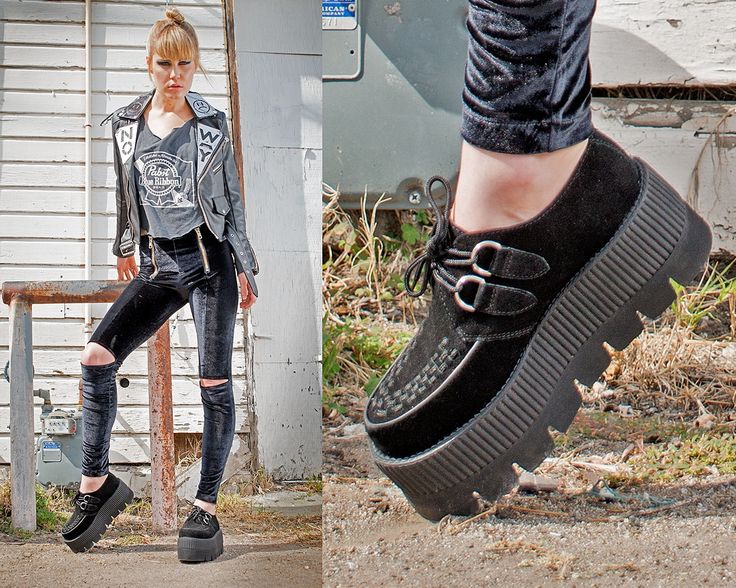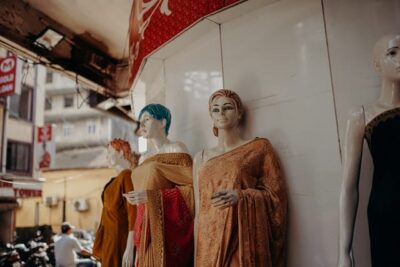In the swirling vortex of music and fashion, one relic stands tall, quite literally: the platform shoe. From the pulsing discos of the ’70s to ancient streets of civilizations long gone, platform shoes have danced their way through history and across continents. Grab your passports (and perhaps a sturdy pair of ankle straps), because we’re about to embark on a global tour of platform shoes and their foot-tapping tales.
Japan: Geta Grooves
When thinking of Japan’s traditional attire, kimonos might steal the limelight. But peek below those flowing robes and you’ll discover the geta. These elevated wooden sandals, supported by two wooden blocks, have been an integral part of Japan’s sartorial repertoire for centuries.
Originating as a practical solution to keep feet above unpaved streets, geta quickly evolved into a cultural symbol. With Japan’s affinity for balancing nature and aesthetics, geta is often made of beautiful, sturdy woods. The clacking sound of geta on stone streets is a rhythm; a beat echoing old tales and traditions.
Musically speaking, think of geta as the classical instruments of the platform world – they carry stories, traditions, and have witnessed countless moments in history.
Italy: The Renaissance Rise of Chopines
Venture to Venice of the 15th century, and you’d encounter a fashion wonder: the chopine. Worn primarily by women, these sky-high platforms were made of wood or cork and could reach staggering heights of up to 20 inches!
Chopines were more than fashion; they were status symbols. The higher the chopine, the higher the societal standing. These shoes also harmonized with the extravagant dresses of the time, keeping hemlines pristine and elevated above muddy streets.
Musically, chopines are the grand operas of platforms – dramatic, powerful, and full of tales of romance and intrigue.
China: Manchu Might
In Qing Dynasty China, Manchu platform shoes had their moment. Unlike the extreme heights of chopines, these platforms were more modest, with a sole raised slightly in the front. Worn by both men and women, they often showcased intricate embroidery, narrating tales of dragons, phoenixes, and nature.
If geta is classical and chopines are opera, the Manchu platforms are traditional Chinese ballads – stories told through stitches and steps.
Spain: Albarca Altitudes
Moving to Spain, we discover albarcas. Originating from the Cantabria region, these are wooden-soled platforms attached to the foot using leather straps. Traditionally, albarcas were the choice of peasants, designed to elevate and protect feet from harsh terrains.
In the rhythm of world music, albarcas are the foot-tapping flamenco guitars, echoing tales of everyday life and the pulse of the people.
Africa: Elevated Elegance
In several African cultures, platform shoes made from natural materials like wood, leather, and plant fibers have been a staple. They were not just for fashion but also served ceremonial purposes, often worn by tribal chiefs and dignitaries during important events.
Musically, these platforms can be likened to the African drums – deeply rooted in tradition, resonating with the heartbeats of ancestors and echoing tales of valor and community.
England & America: The Disco Dream
Fast forward to the ’70s, platforms took the West by storm. Fueled by the disco era and glam rock, platforms became synonymous with the rebellious spirit of the times. Bands like KISS and icons like David Bowie made platforms an emblem of self-expression. The ’70s platforms are the electric guitars of the shoe world – loud, rebellious, and unforgettable, going to multiple types of footwear, like combat boots, loafers, mary janes, sandals and sneakers.
Conclusion: The Universal Beat of Platforms
From the ancient streets of Kyoto to the bustling lanes of Venice, platform shoes have treaded them all. They’re not just footwear; they’re cultural footnotes. As the world danced to different beats and rhythms, platforms echoed those tunes, one elevated step at a time. Whether it’s the clacking of geta or the disco beats resonating from glittering ’70s heels, the song remains the same: platforms are timeless, boundless, and a testament to humanity’s shared love for style, stories, and songs.









